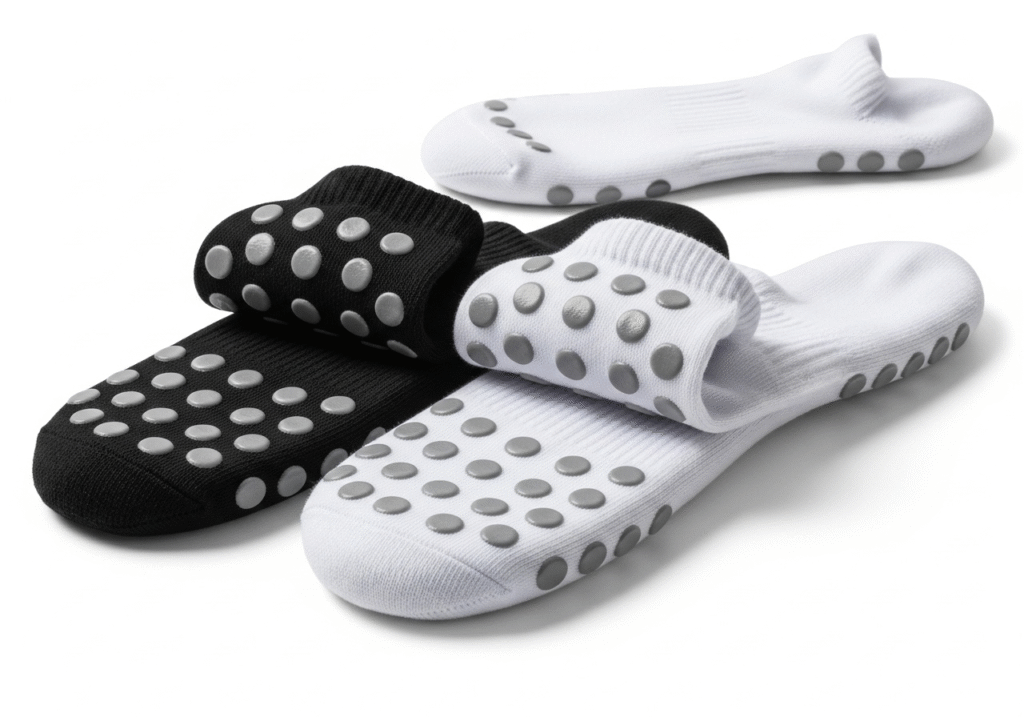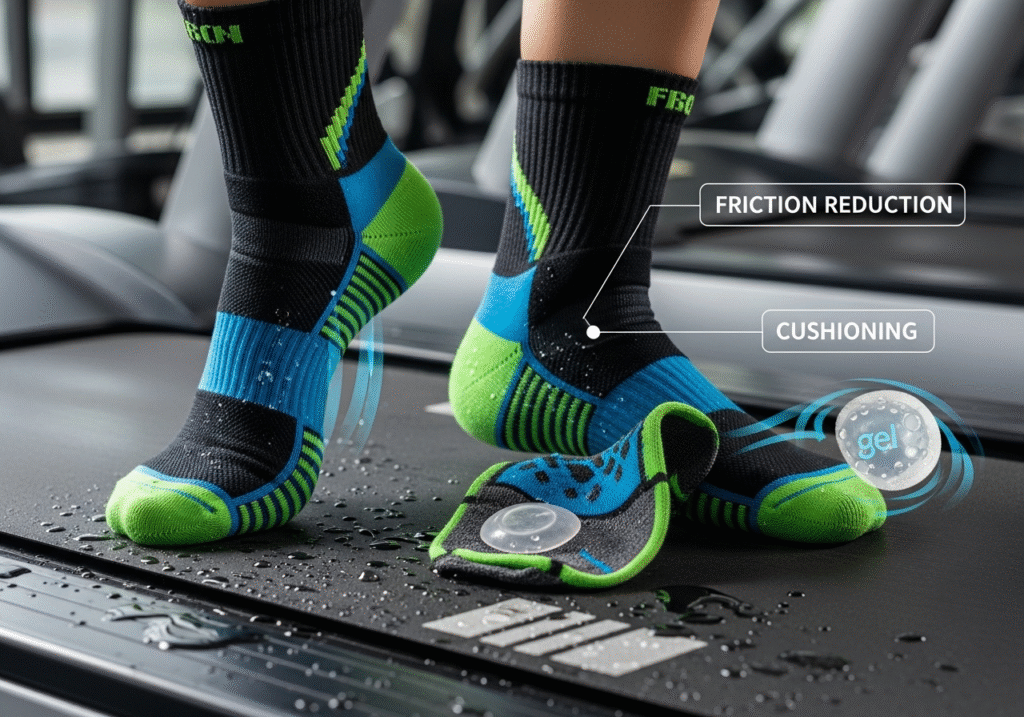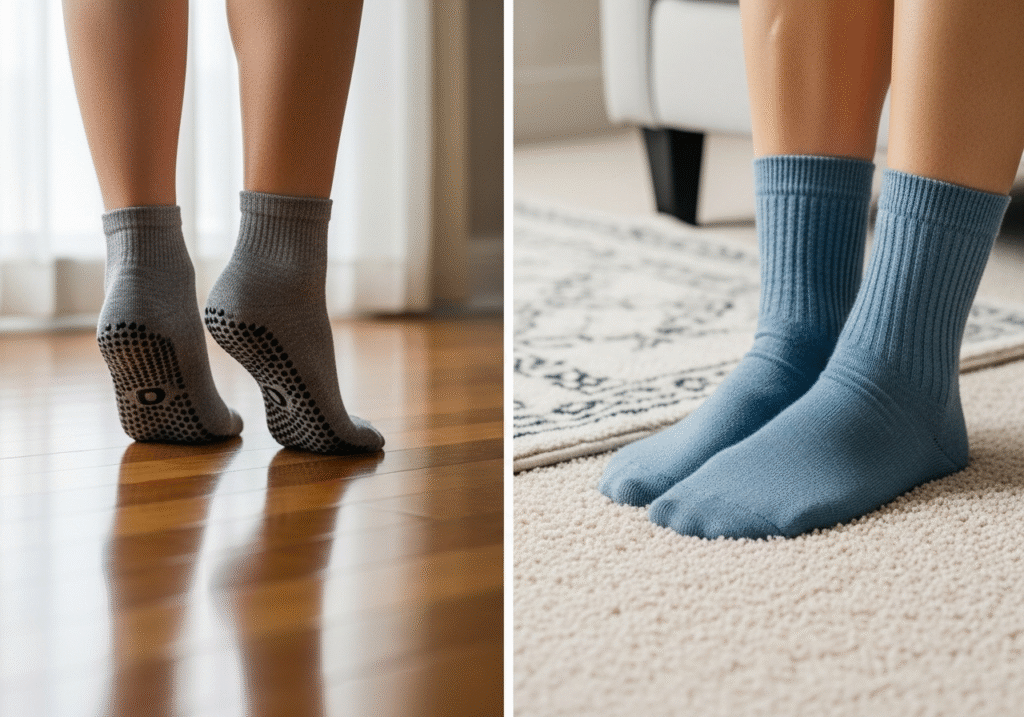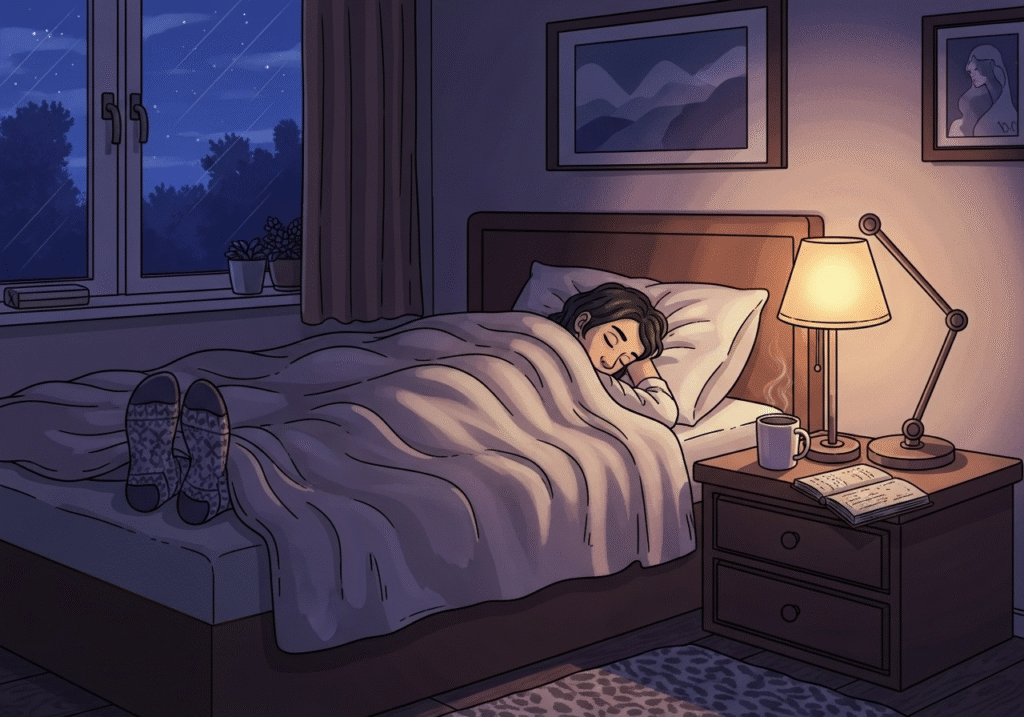Slipping on a studio floor during a yoga pose ruins your focus. This fear of falling or disgust at germy floors can hold you back. Grip socks give you the stability and hygiene to work out with confidence.
Grip socks are better than barefoot for indoor workouts because they provide superior traction on slick floors, offer a hygienic barrier against bacteria and fungi, and deliver light compression for support and comfort.

I've spent years on factory floors, perfecting the exact amount of silicone needed for optimal grip. I once worked with a Pilates studio owner who told me her attendance for a new class was low. We realized members were hesitant because the studio had beautiful but slick-looking hardwood floors. After she started including a pair of branded grip socks with the class fee, sign-ups doubled. It wasn't just about the freebie; it was about removing a hidden barrier of fear.
Why are grip socks better than normal socks?
You might think any sock will do for an indoor workout. But when you wear normal socks for yoga, you slip and slide even more, making the workout frustrating and dangerous.
Grip socks are better because they are engineered with silicone grips for traction, unlike normal socks which are designed to be slippery inside a shoe. Their snug fit also prevents twisting.

As a sock manufacturer, I can tell you these are two completely different tools designed for opposite jobs. A normal sock is made to reduce friction, allowing your foot to slide easily into a shoe. A grip sock is made to create friction, locking your foot to the floor.
1. Engineered for Traction
The soul of a grip sock is its grip pattern. We use 100% liquid silicone applied through a screen and heat-cured to permanently bond with the fabric. This creates a high-friction surface that grabs onto smooth studio floors. A regular sock is just a layer of fabric that slides easily.
2. Designed for Stability
A normal sock is often loose-fitting. During dynamic movements, it will twist around your foot. This is annoying and dangerous, as the sock's seam can cause irritation and the bunching fabric can make you lose balance. Grip socks are knit with more elastane and have compression bands around the arch, ensuring they stay perfectly in place, so the grips are always on the bottom where they belong.
| Feature | Normal Sock | Grip Sock |
|---|---|---|
| Purpose | Reduce friction inside a shoe | Create friction on a floor |
| Sole | Smooth fabric | Silicone grip pattern |
| Fit | Often loose, can twist or bunch | Snug, athletic fit with arch support |
| Performance | Causes slipping on smooth surfaces | Prevents slipping on smooth surfaces |
Are socks better than barefoot on a treadmill?
You see people on treadmills barefoot and wonder if it's better. This can lead to confusion about what's safer or more effective for your feet during a run.
Yes, wearing proper athletic socks is much better than being barefoot on a treadmill. Socks absorb sweat, prevent blisters by reducing friction, and provide cushioning inside your running shoes.

This question is about in-shoe workouts, which requires a specific type of sock. While grip socks are masters of the studio floor, a different hero is needed inside a shoe.
The Role of an Athletic Sock
When you run, your feet take a beating and sweat a lot. Being barefoot in a shoe is a recipe for problems.
- Blister Prevention: The main job of an athletic sock is to be a smooth, protective layer between your skin and the rough interior of your shoe. This prevents the rubbing that causes painful blisters.
- Moisture Management: Quality athletic socks are made from synthetic wicking fibers like nylon or polyester, not cotton. They pull sweat away from your skin to keep your feet dry and comfortable. Bare feet in a shoe just create a swampy, unhygienic environment.
- Cushioning and Support: Many athletic socks have extra padding in the heel and ball of the foot to absorb impact.
While you don't need silicone grips inside a shoe, the principle of using the right tool for the job remains. For treadmill running, you need a technical athletic sock. For the cool-down stretching on the floor afterward, a pair of grip socks is the perfect transition.
Is it better to be barefoot or wear socks at home?
Walking around at home, you face a choice. Barefoot feels natural but offers no protection, while regular socks are warm but turn hardwood floors into a skating rink.
On hard floors, grip socks are the safest option, combining the comfort of a sock with the safety of reliable traction. On carpeted floors, the choice is purely about personal comfort.

The best choice for your feet at home depends entirely on your flooring and your priorities: comfort, safety, or that natural barefoot feeling.
1. For Warmth and Comfort
Socks are the clear winner, especially on cold tile or wood floors1. A cozy sock2 insulates your feet and just feels more comfortable for lounging. Barefoot can leave your feet feeling cold and vulnerable.
2. For Safety
This is where the distinction is critical. Regular socks are a major hazard on hard floors. I’ve heard countless stories from partners who started carrying grip socks after a family member slipped at home. Being barefoot offers some natural traction3, but this is easily compromised by a bit of dust or a small spill. Grip socks provide consistent, reliable traction3, making them the undisputed champion for safely navigating a home with hard flooring.
3. For Natural Connection
Some people simply prefer the feeling of being barefoot, and on a soft, clean carpet, there is little downside. However, for most modern homes with a mix of surfaces, grip socks provide the best all-around solution.
| At-Home Option | Safety (Hard Floors) | Comfort & Warmth |
|---|---|---|
| Barefoot | Low | Low |
| Regular Socks | Very Low | High |
| Grip Socks | High | High |
Is it better to sleep barefoot or with socks on?
You struggle to fall asleep and wonder if your cold feet are the problem. You've heard people debate whether sleeping with socks on is healthy or weird, leaving you unsure what to do.
It can be better to sleep with socks on. Warming your feet helps your body lower its core temperature, which is a natural signal to your brain that it's time to sleep.

This is a surprisingly scientific question, and the answer lies in our body's internal thermostat, or thermoregulation.
The Science of Sleep
To initiate sleep, your body's core temperature4 needs to drop slightly. It sounds strange, but one of the most efficient ways to do this is by warming up your hands and feet. When your feet are warm, the blood vessels on the surface of the skin dilate in a process called vasodilation5. This allows heat to escape, which in turn helps cool down your core. So, putting on socks before bed can actually be a signal that tells your body, "Okay, time to release heat and prepare for sleep."
The Right Kind of Sock
This doesn't mean you should wear your thick, tight athletic socks to bed. That can be restrictive and make your feet too hot. The ideal sock for sleeping is:
- Lightweight and Breathable: Materials like light cotton, merino wool, or cashmere are perfect because they warm you up without trapping excess heat or sweat.
- Non-Constricting: The sock should be loose enough that it doesn't impede circulation.
Ultimately, it comes down to personal comfort. If you can't stand the feeling of socks in bed, it's not for you. But if you often have cold feet, trying a pair of light, soft socks could be a simple trick to help you fall asleep faster.
Conclusion
For any indoor workout on a hard surface, grip socks are simply better. They provide the safety, hygiene, and stability that being barefoot or wearing normal socks can't match.
Related:
-
Discover effective strategies to keep your feet warm on cold surfaces, ensuring comfort in your home. ↩
-
Explore the benefits of cozy socks to understand how they enhance comfort and warmth, especially in colder environments. ↩
-
Learn about the importance of traction in preventing accidents on hard surfaces and how to improve it effectively. ↩ ↩
-
Exploring the relationship between core temperature and sleep can enhance your sleep strategies for better health. ↩
-
Understanding vasodilation can help you optimize your sleep environment and improve your rest. ↩
